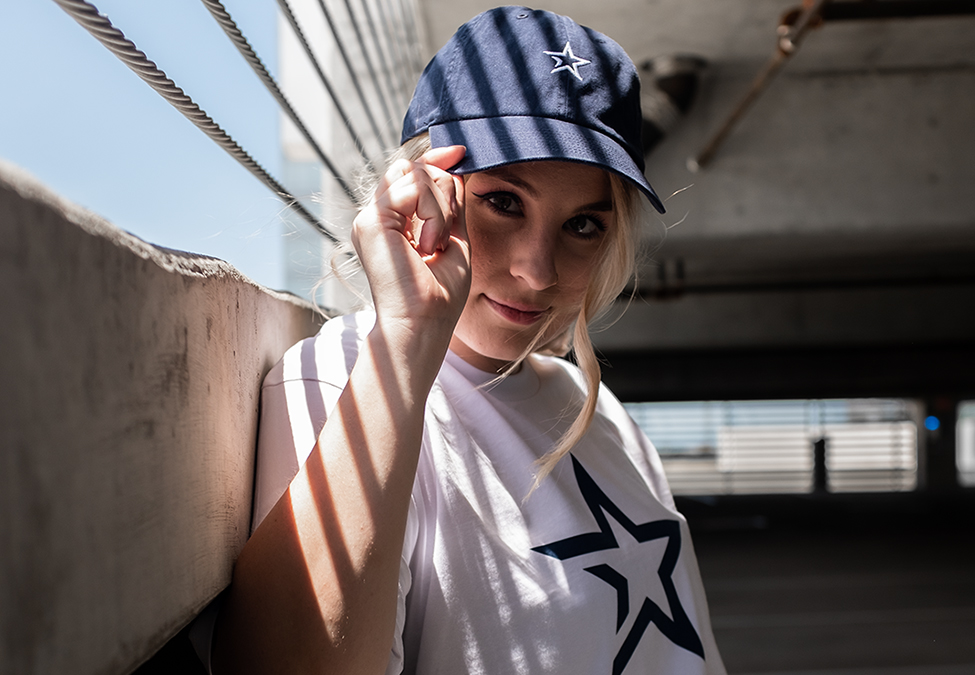It’s 1958 and Bill Bowerman watches runners circle the University of Oregon track. As coach of the U of O track team, Bowerman was obsessed with the idea of making his runners faster. He tinkered with the track surface and created a Gatorade-like electrolyte replacement, but his biggest impact came with his runner’s footwear. What started with improving the strides of athletes he coached became a company you might have heard of.
It’s called Nike.

The company has become much more than performance apparel but extensive research into athlete performance has always been core to Nike’s mission. As Complexity Gaming and We Are Nations partnered to create esports first all-encompassing, dedicated research facility, lessons from Nike helped drive their focus.
“Our creation of esports apparel is no different than when Nike looked at running and said ‘if we change this arch, if we add this feature, we can improve runner’s performance,'” Cam Kelly, CMO of Complexity, told Esports Insider. “That’s what we are after at The Lab. We want to create marginal improvements in performance by looking at equipment and apparel.”
Bowerman realized that for every ounce shaved off a shoe it reduces the runners lift by 55 pounds over the course of a mile. Much like running where a second shaved off a record is a massive accomplishment, esports requires thinking in milliseconds and millimetres. With such small margins dictating success, minor adjustments can have a major impact.
“We know through our work with Herman Miller that there is a lot of opportunity for improvement on equipment,” Kelly continued. “Outside of health, nutrition and fitness, apparel and equipment are a big part of creating change on the scale of milliseconds and millimetres. If someone is hot or if they can’t flex the way that they need to, we will see lost performance.”
From the start, The Lab will be focused on research. After all, to solve a problem, you need to first identify it. The process of creating a product goes through three steps. Complexity’s players will start in the Cognitive Lab, an environment to measure reaction speed, memory, and inhibition.
[primis_video widget=”5183″]
Then they will move to the Herman Miller Innovation Lab where they’ll provide feedback on prototypes in controlled private sessions. Finally, the products will go to the Advanced Training Rooms where they will undergo stress testing in environments that mimic LAN settings including temperature, sound, lighting, and equipment. But before anything reaches the Advanced Training Rooms, hours will be spent in the Cognitive Lab.
“It took someone building out structure to identify those improvements in the running world,” said Kelly. “That’s what we have with our facilities – controlled environment testing. We can change temperature and sound and lighting. We will use our cognitive lab to measure improvements in reaction speed over time. At Nike’s Beaverton campus, you can test every little function of a piece of apparel or footwear. That’s what I’m most excited for at The Lab.”
Esports performance apparel isn’t totally new. Esports apparel companies, like We Are Nations, have been creating apparel with gamers in mind. But access to a fully developed research lab with top esports players provides unprecedented opportunities. Puma, one of the leaders in athletic apparel – which has pushed into esports by partnering with Gen.G and Cloud9 – is doing its own research into performance apparel.

RELATED: Cloud9 expands partnership deal with PUMA
“There are certain features in terms of temperature regulation and comfort over long periods of time that govern what materials you use,” Matt Shaw, Team Head of Digital Marketing and Esports at Puma, told Esports Insider. “These are things that are different in esports than in any other sport. We as a brand have the resources to do that really in-depth sort of research and investigation and the drive to create apparel off that research.”
Puma has access to gamers at Gen.G, ORDER, and Cloud9, as well as a world-class sports research facility. Nike too has brought gamers into the Beaverton campus to test performance. Thanks to Complexity’s relationship with the Dallas Cowboys, The Lab isn’t lagging behind these athletic apparel giants when it comes to facilities either.
All of these companies see an opportunity to improve esports apparel. So for people quick to scorn the idea of esports performance apparel, know that the companies who specialize in this exact area are all investing in creating improvements. After all, in sports, the closer the margins a sport operates on, the more the equipment matters. No sport operates on margins as slim as esports – it’s only a matter of time until these dedicated research centres begin producing important new products.
“To take esports performance to the next level, we need to look at other sports to see how technology has improved performance in order to help us inform our decisions with respect to apparel,” said Patrick Mahoney, CEO of We Are Nations, to Esports Insider. “One of the most obvious examples in the last 20+ years is the switch from wool or cotton to synthetic fabrics in technical performance wear, which has done everything from making runners slightly faster to regulating mountaineers’ body temperature. Esports is still in its early stages, so who knows where we are going to take it. But Nations understands the importance of this research, and we are excited to be a part of it.”

In sports, some equipment has had to be banned for the advantage it provides. In golf, the anchored putter was struck down. For swimming, it was full body “fast suits.” A recent Nike shoe’s legality would have been a major story at the Tokyo Olympics had it not been postponed. The right tech may create that situation in esports as well.
“Think about connecting audio to haptics (technology that simulates touch) and that could potentially give a player advance notice of an enemy in comparison to just the audio by itself,” Kelly explained. “Then there’s even crazier stuff when you think about smart contact lenses or Google Glass that could create new HUD formats that give an unfair advantage.”
Those are products way down the line but give an idea of the type of tech The Lab is thinking about. Shaving ounces may have worked for Bowerman but there’s a new level of tech in esports. Ultimately the goal for Complexity is to embody the philosophy of “Esports 3.0.”
Jason Lake’s mantra touts the new age of thinking about professional gamers. Since founding Complexity in 2002, Lake has seen plenty of esports come and go. Esports 3.0 is this newfound focus on health and wellness. Lake touts nutrition, fitness, mindfulness, work-life separation, and an overall mindset on player wellbeing as the future of esports. Beyond being an objectively good thing to do, the Esports 3.0 mindset can also prolong player careers and improve performance. Complexity’s CS:GO team showed that recently at the BLAST Premier Spring Finals.
“Esports 3.0 is about pushing the industry forward,” Kelly said, showing the organisation as a whole has bought into Lake’s philosophy. “We don’t want to keep the things we create close to our chest. Every finding, every nutritional fact, every trick for cognitive well-being, every tip to improve sleep schedule or reduce the impact of blue light, all of those things need to be shared. That’s why we love working with We Are Nations, that’s the commitment from their side too.”
[maxbutton id=”11″ ]
